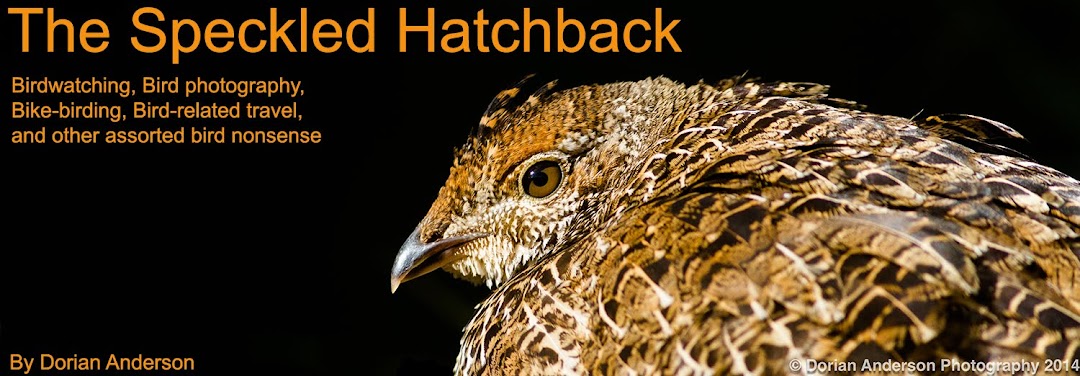I had the end of the peninsula to myself when I arrived at 3pm on November 23rd, a brief search revealing the bird five feet from where I observed it during my first visit. I busted out my 600mm lens and began a leisurely game of cat-and-mouse with the subject sandpiper. It was as approachable as I'd hoped, and my lens quickly proved too much for a bird willing to wander with five feet of me. I swapped in my 100-400mm, that closer-focusing and more-maneuverable option proving a much better choice.
***click images for larger, more detailed views***
Rock Sandpiper - Calidris ptilocnemis
Canon 100-400mm f/4.5-5.6 IS II on EOS 5D Mark IV
Obtaining a clean composition between rocks and shadows was challenging, but my patient, hour-long interaction yielded a couple choice opportunities. I avoided shooting the bird on the intermingled chunks of concrete because I don't want man-made objects contaminating my frames, and I thought the above example afforded and an accurate and attractive picture of the bird in its natural habitat. Importantly, I can see the bird's legs and feet amidst the seaweed, a critical consideration for my shorebird frames. I chose to use f/7.1 (versus wide-open and fastest f/5.6) to achieve a bit more depth-of-field across the seaweed. I didn't want to close down more - to f/8 or f/9 - because that would have compromised my ability to generate a smooth background, the water only a few feet behind the subject.
Rock Sandpiper - Calidris ptilocnemis
Canon 100-400mm f/4.5-5.6 IS II on EOS 5D Mark IV
1/1600 at f/7.1, ISO 1000
With the two frames taken just moments apart and under identical lighting conditions, why did I use different shutter speeds at the same f/-stop and ISO? The exposure on the bird should be the same, right? Yes, but I selected the slower shutter (1/1000 versus 1/1600) in the first to get more detail on the comparatively darker seaweed. I could have raised the shadow/darks in the first in post-production had I used 1/1600, but that would have added noise to the lower half of the frame. Adding the extra light to get more detail on the seaweed meant I had to turn down the highlights on the comparatively lighter bird instead, but that is very easy to do in Lightroom and generally comes with little penalty in image quality (assuming the lights aren't completely saturated to start).
OK, enough. The point of all this is to take you through my thought process and highlight the importance of 'image design'. Good photographs don't just happen; they almost always result from creative conception, proper planning, and excellent execution. Having decent gear helps, but no camera is going yield a beautiful, high-contrast, color-saturated images in overhead sunlight, right? For this shoot, rubber boots and crappy pants were probably my most important gear! Proper photography, like hardcore birding, is a commitment!
OK, that's it for now. Hopefully it wasn't technical overload. Happy Thanksgiving either way.....













